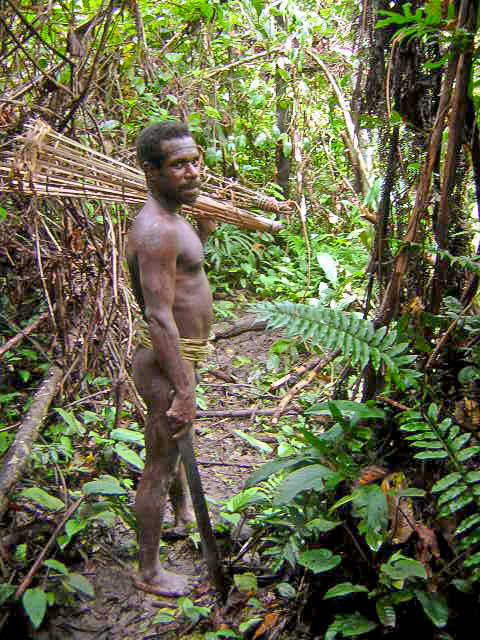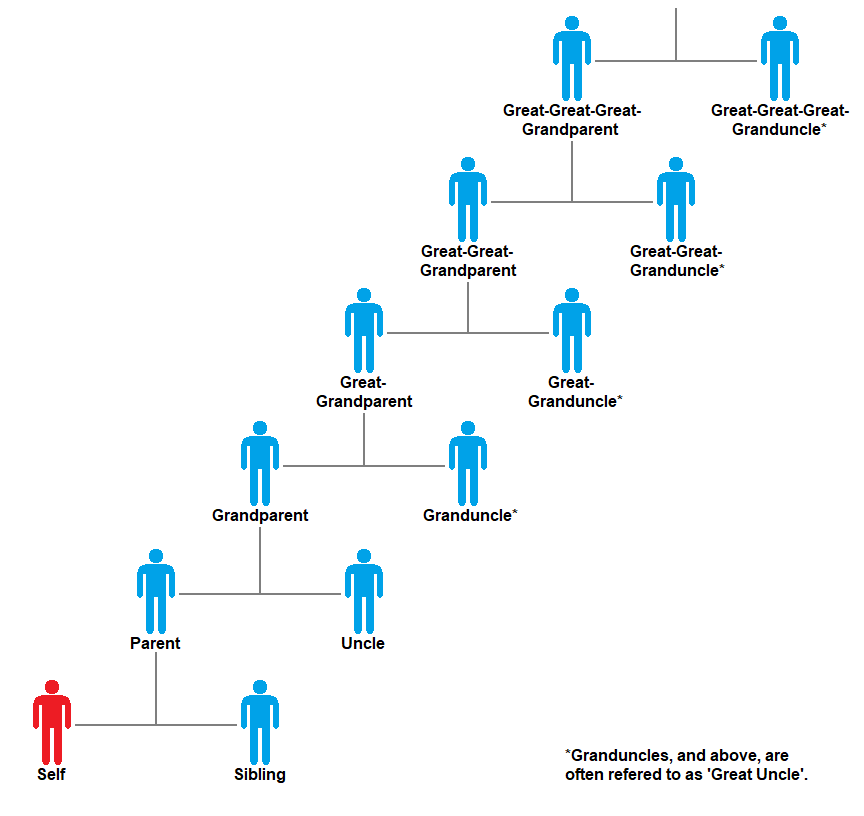|
Korowai People
The Korowai, also called the Kolufo, are the people who live in southeastern West Papua in the Indonesian province of South Papua, close to the border with Papua New Guinea. They number about 3,000. According to ''The Daily Telegraph'', "Until the late 1970s, when anthropologists embarked on a study of the tribe, the Korowai were unaware of the existence of any peoples other than themselves". Language The Korowai language belongs to the Awyu–Dumut family (southeastern Papua) and is part of the Trans–New Guinea phylum. A dictionary and grammar book have been produced by a Dutch missionary linguist. Living The majority of the Korowai clans live in tree houses on their isolated forested territory.Sustainable living: Korowai tribe and tree h ... [...More Info...] [...Related Items...] OR: [Wikipedia] [Google] [Baidu] |
Shifting Cultivation
Shifting cultivation is an agricultural system in which plots of land are cultivated temporarily, then abandoned while post-disturbance fallow vegetation is allowed to freely grow while the cultivator moves on to another plot. The period of cultivation is usually terminated when the soil shows signs of exhaustion or, more commonly, when the field is overrun by weeds. The period of time during which the field is cultivated is usually shorter than the period over which the land is allowed to regenerate by lying fallow. This technique is often used in LEDCs (Less Economically Developed Countries) or LICs (Low Income Countries). In some areas, cultivators use a practice of slash-and-burn as one element of their farming cycle. Others employ land clearing without any burning, and some cultivators are purely migratory and do not use any cyclical method on a given plot. Sometimes no slashing at all is needed where regrowth is purely of grasses, an outcome not uncommon when soils are ... [...More Info...] [...Related Items...] OR: [Wikipedia] [Google] [Baidu] |
Rhynchophorus Ferrugineus
The palm weevil ''Rhynchophorus ferrugineus'' is one of two species of snout beetle known as the red palm weevil, Asian palm weevil or sago palm weevil. The adult beetles are relatively large, ranging between long, and are usually a rusty red colour—but many colour variants exist and have often been classified as different species (e.g., '' Rhynchophorus vulneratus''). Weevil larvae can excavate holes in the trunks of palm trees up to long, thereby weakening and eventually killing the host plant. As a result, the weevil is considered a major pest in palm plantations, including the coconut palm, date palm and oil palm. Originally from tropical Asia, the red palm weevil has spread to Africa and Europe, reaching the Mediterranean in the 1980s. It was first recorded in Spain in 1994, and in France in 2006. Additional infestations have been located in Malta, Italy (Tuscany, Sicily, Campania, Sardinia, Lazio, Marche, Puglia and Liguria), Croatia and Montenegro. It is also well estab ... [...More Info...] [...Related Items...] OR: [Wikipedia] [Google] [Baidu] |
Magic (paranormal)
Magic, sometimes spelled magick, is an ancient praxis rooted in sacred rituals, spiritual divinations, and/or cultural lineage—with an intention to invoke, manipulate, or otherwise manifest supernatural forces, beings, or entities in the natural, incarnate world. It is a categorical yet often ambiguous term which has been used to refer to a wide variety of beliefs and practices, frequently considered separate from both religion and science. Although connotations have varied from positive to negative at times throughout history, magic continues to have an important religious and medicinal role in many cultures today. Within Western culture, magic has been linked to ideas of the Other, foreignness, and primitivism; indicating that it is "a powerful marker of cultural difference" and likewise, a non-modern phenomenon. During the late nineteenth and early twentieth century, Western intellectuals perceived the practice of magic to be a sign of a primitive mentality and also commo ... [...More Info...] [...Related Items...] OR: [Wikipedia] [Google] [Baidu] |
Witchcraft
Witchcraft traditionally means the use of magic or supernatural powers to harm others. A practitioner is a witch. In medieval and early modern Europe, where the term originated, accused witches were usually women who were believed to have used malevolent magic against their own community, and often to have communed with evil beings. It was thought witchcraft could be thwarted by protective magic or counter-magic, which could be provided by cunning folk or folk healers. Suspected witches were also intimidated, banished, attacked or killed. Often they would be formally prosecuted and punished, if found guilty or simply believed to be guilty. European witch-hunts and witch trials in the early modern period led to tens of thousands of executions. In some regions, many of those accused of witchcraft were folk healers or midwives. European belief in witchcraft gradually dwindled during and after the Age of Enlightenment. Contemporary cultures that believe in magic and the superna ... [...More Info...] [...Related Items...] OR: [Wikipedia] [Google] [Baidu] |
Big Man (anthropology)
A big man is a highly influential individual in a tribe, especially in Melanesia and Polynesia. Such a person may not have formal tribal or other authority (through for instance material possessions, or inheritance of rights), but can maintain recognition through skilled persuasion and wisdom. The big man has a large group of followers, both from his clan and from other clans. He provides his followers with protection and economic assistance, in return receiving support which he uses to increase his status. Big man "system" The American anthropologist Marshall Sahlins has studied the big man phenomenon. In his much-quoted 1963 article "Poor Man, Rich Man, Big Man, Chief: Political Types in Melanesia", Sahlins uses analytically constructed ideal-types of hierarchy and equality to compare a larger-scale Polynesian-type hierarchical society of chiefs and sub-chiefs with a Melanesian-type big-man system. The latter consists of segmented lineage groups, locally held together by ... [...More Info...] [...Related Items...] OR: [Wikipedia] [Google] [Baidu] |
Categorization
Categorization is the ability and activity of recognizing shared features or similarities between the elements of the experience of the world (such as Object (philosophy), objects, events, or ideas), organizing and classifying experience by associating them to a more abstract group (that is, a category, class, or type), on the basis of their traits, features, similarities or other criteria that are Universal (metaphysics), universal to the group. Categorization is considered one of the most fundamental cognitive abilities, and as such it is studied particularly by psychology and cognitive linguistics. Categorization is sometimes considered synonymous with classification (cf., Classification (general theory)#Synonyms and near-synonyms, Classification synonyms). Categorization and classification allow humans to organize things, objects, and ideas that exist around them and simplify their understanding of the world. Categorization is something that humans and other organisms ''do ... [...More Info...] [...Related Items...] OR: [Wikipedia] [Google] [Baidu] |
Marriage
Marriage, also called matrimony or wedlock, is a culturally and often legally recognized union between people called spouses. It establishes rights and obligations between them, as well as between them and their children, and between them and their in-laws. It is considered a cultural universal, but the definition of marriage varies between cultures and religions, and over time. Typically, it is an institution in which interpersonal relationships, usually sexual, are acknowledged or sanctioned. In some cultures, marriage is recommended or considered to be compulsory before pursuing any sexual activity. A marriage ceremony is called a wedding. Individuals may marry for several reasons, including legal, social, libidinal, emotional, financial, spiritual, and religious purposes. Whom they marry may be influenced by gender, socially determined rules of incest, prescriptive marriage rules, parental choice, and individual desire. In some areas of the world, arrang ... [...More Info...] [...Related Items...] OR: [Wikipedia] [Google] [Baidu] |
Polygynous
Polygyny (; from Neoclassical Greek πολυγυνία (); ) is the most common and accepted form of polygamy around the world, entailing the marriage of a man with several women. Incidence Polygyny is more widespread in Africa than in any other continent. Some scholars see the slave trade's impact on the male-to-female sex ratio as a key factor in the emergence and fortification of polygynous practices in regions of Africa. Polygyny is most common in a region known as the "polygamy belt" in West Africa and Central Africa, with the countries estimated to have the highest polygamy prevalence in the world being Burkina Faso, Mali, Gambia, Niger and Nigeria. In the region of sub-Saharan Africa, polygyny is common and deeply rooted in the culture, with 11% of the population of sub-Saharan Africa living in such marriages (25% of the Muslim population and 3% of the Christian population, as of 2019). Polygyny is especially widespread in West Africa, with the countries estimated to ... [...More Info...] [...Related Items...] OR: [Wikipedia] [Google] [Baidu] |
Exogamous
Exogamy is the social norm of marrying outside one's social group. The group defines the scope and extent of exogamy, and the rules and enforcement mechanisms that ensure its continuity. One form of exogamy is dual exogamy, in which two groups continually intermarry with each other. In social science, exogamy is viewed as a combination of two related aspects: biological and cultural. Biological exogamy is marriage of nonblood-related beings, regulated by forms of incest law. Cultural exogamy is marrying outside a specific cultural group; the opposite being endogamy, marriage within a social group. Biology of exogamy Exogamy often results in two individuals that are not closely genetically related marrying each other; that is, outbreeding as opposed to inbreeding. In moderation, this benefits the offspring as it reduces the risk of the offspring inheriting two copies of a defective gene. Increasing the genetic diversity of the offspring improves the chances of offspring reprod ... [...More Info...] [...Related Items...] OR: [Wikipedia] [Google] [Baidu] |
Affinity (law)
In law and in cultural anthropology, affinity is the kinship relationship created or that exists between two people as a result of someone's marriage. It is the relationship which each party to a marriage has to the relations of the other partner to the marriage, but it does not cover the marital relationship itself. Laws, traditions and customs relating to affinity vary considerably, sometimes ceasing with the death of one of the marriage partners through whom affinity is traced, and sometimes with the divorce of the marriage partners. In addition to kinship by marriage, "affinity" can sometimes also include kinship by adoption or a step relationship. Unlike blood relationships (consanguinity), which may have genetic consequences, affinity is essentially a social or moral construct, at times backed by legal consequences. In law, affinity may be relevant in relation to prohibitions on incestuous sexual relations and in relation to whether particular couples are prohibited ... [...More Info...] [...Related Items...] OR: [Wikipedia] [Google] [Baidu] |
Uncle
An uncle is usually defined as a male relative who is a sibling of a parent or married to a sibling of a parent. Uncles who are related by birth are second-degree relatives. The female counterpart of an uncle is an aunt, and the reciprocal relationship is that of a nephew or niece. The word comes from la, avunculus, the diminutive of ''avus'' (grandfather), and is a family relationship within an extended or immediate family. In some cultures and families, children may refer to the cousins of their parents as uncle (or aunt). It is also used as a title of respect for older relatives, neighbours, acquaintances, family friends, and even total strangers in some cultures, for example Aboriginal Australian elders. Using the term in this way is a form of fictive kinship. Any social institution where a special relationship exists between a man and his sisters' children is known as an avunculate (or avunculism or avuncularism). This relationship can be formal or informal, dependi ... [...More Info...] [...Related Items...] OR: [Wikipedia] [Google] [Baidu] |




